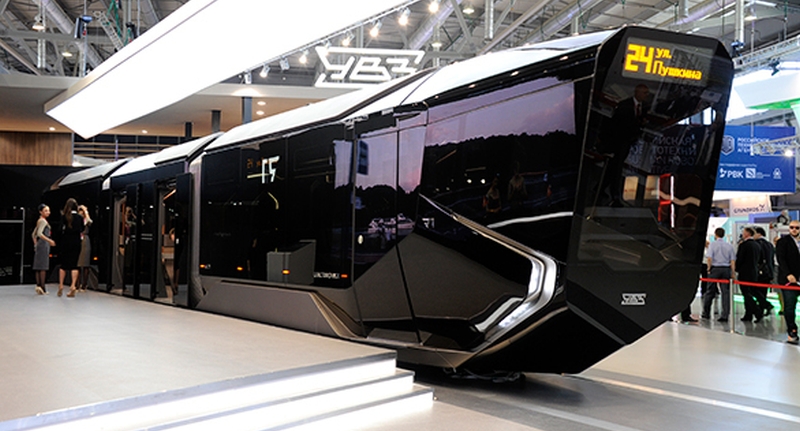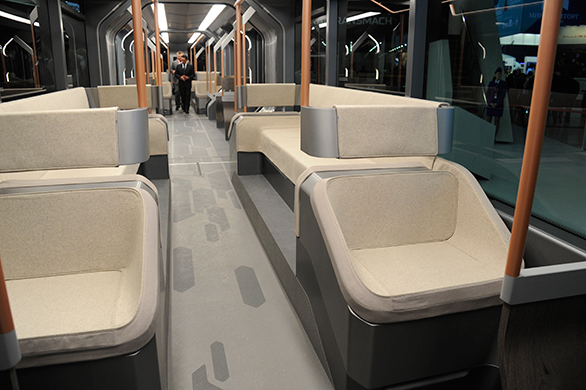Five years ago, launching a decent streaming platform took millions. Now? A teenager with a laptop can build something that reaches millions. That shift…
Russia’s R1 super-tram will ‘integrate into any landscape’ and it has USB 3.0


Only in Russia, say the memes, but in this particular case, it certainly rings true. Recently debuting at Innoprom 2014 was the Soviet nation’s most elaborate, and certainly tech-drenched tram the world has ever seen.
Dubbed the Russia One (or R1), the high-tech transport looks a bit like a snail, and one wouldn’t be misled to think of a tram as an overweight piece of wood with a few rails beneath. But Yekaterinburgian creators (yes, that’s a real place) of the Russia One, UralVagonZavod (UVZ) have certainly removed the stigma with one fell swoop.
The bi-directional R1 has a forward-slanted windshield, that provides the driver with a 30% larger scope decreasing the chance of a pedestrian strike, along with some cost — and weight — cutting glass composite panels surrounding the vehicle. It’s also modular with adjustable bogeys, allowing it to coast on any rail network in any city, regardless of the surface’s quality. Its crystal-like exterior will “integrate into any landscape – forest, industrial area, any sort of modern buildings.” Frankly, we wonder how you’d be able to miss it, especially since it holds up to 270 passengers.

Inside, the R1 looks more like a space-age Bentley than a tram. Although it travels at a tortoise-rivalling 24km/h, it features cabin-mounted adaptive LED lights and anti-bacterial handrails, including WiFi, GPS, GLONASS, seven HD-CCTV cameras, mandatory air-conditioning and USB 3.0 charging outlets.
Incredibly, it doesn’t have a submarine holding dock, or a supercar launching ramp, but it does look like something straight out of that particular Christopher Nolan trilogy.
UVZ is in early talks with markets in Eastern Europe, South America, even Melbourne, but we should see these in Russian cities long before international introduction. However, the world will have to wait until 2015 to see these super trams in the composite flesh.


